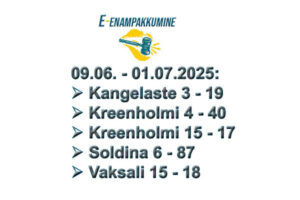– dense breast tissue provides increased risk of breast cancer
Nevertheless, Norwegian women do not receive information that they have dense breast tissue. In a survey conducted by the Breast Cancer Association, 90 per cent responded that they want to know if they have dense breast tissue.
In addition to an increased risk of developing breast cancer, it may also be more difficult to detect breast cancer in dense breast tissue on mammography. In fact, there is a 50 percent chance that breast cancer will not be detected in the images in women with dense breast tissue.
Our survey was answered by almost 900 respondents, and over 70 percent had heard of dense breast tissue (mammographically dense glandular tissue). Still, only well under half were aware that dense breast tissue could increase the risk of developing breast cancer.
Women who have dense breast tissue are not automatically notified of this in today’s mammography program. A few are called after the examination if the doctor thinks the pictures are not clear enough. But in most cases, women with dense breast tissue will not receive further follow -up from the public health system.
Despite not being followed up by dense breast tissue, the answers in the study show that Norwegian women want information about their breast density. Almost 60 percent say they would have considered using private health services, and get additional surveys such as MRI or ultrasound, if they learned that they had dense breast tissue after screening.
The Breast Cancer Society believes that Norwegian women should be given information about their breast density in connection with the screening study. Norwegian studies on screened women aged 50-69 show that between 30-36 per cent have dense breast tissue. The screening result can provide false security, since it is more difficult to detect breast cancer when the breast tissue is dense. Women should be informed that they have dense breast tissue so that they are aware if symptoms appear. In 2022, the European Breast Aquarters Organization recommended that screening programs should inform about mammographic density. Now our survey shows that women also want to know about their breast density.
Women with high breast density should be followed up with systematic additional studies. Today, X -ray doctors interpret the results, and they have varying opportunities to assess breast density. There are artificial intelligence software available, which can read the mammography images and categorize the density of the chest. If this is used, women can get reliable information about dense breast tissue and thus follow up their own health on a more informed basis.
The Breast Cancer Association also works for more women to be included in today’s mammography program, which invites women between 50-69 years. Recent documentation shows that organized screening can reduce the mortality rate of breast cancer in women aged 45-49 and 70-74 years. Women who discover their breast cancer can receive more gentle treatment and shorter treatment time. Early discovery also saves life. The Breast Cancer Association believes that it is a matter of course that the screening age should be extended to all women between 45-74.
If more women are included in the mammography program, and women with dense breast tissue are followed up better, more breast cancer cases will be detected and many more lives are saved.
Trine-Mari Aavitsland
Deputy Chairman/Board Member
Region north
Breast Cancer Association





